As summer’s garden colors fade, you might think your harvest season concludes. However, you possess a powerful secret weapon for late-season flavor enhancement: the ‘first frost’ trick. This method naturally transforms some of your favorite cool-season vegetables, like kale and carrots, into remarkably sweeter, more tender delights. Even in small spaces, such as balconies or patios, you can apply this simple technique to elevate your container vegetable gardening efforts. Discover how a subtle temperature drop unlocks a hidden depth of flavor in your fall harvest, making your gardening truly rewarding.
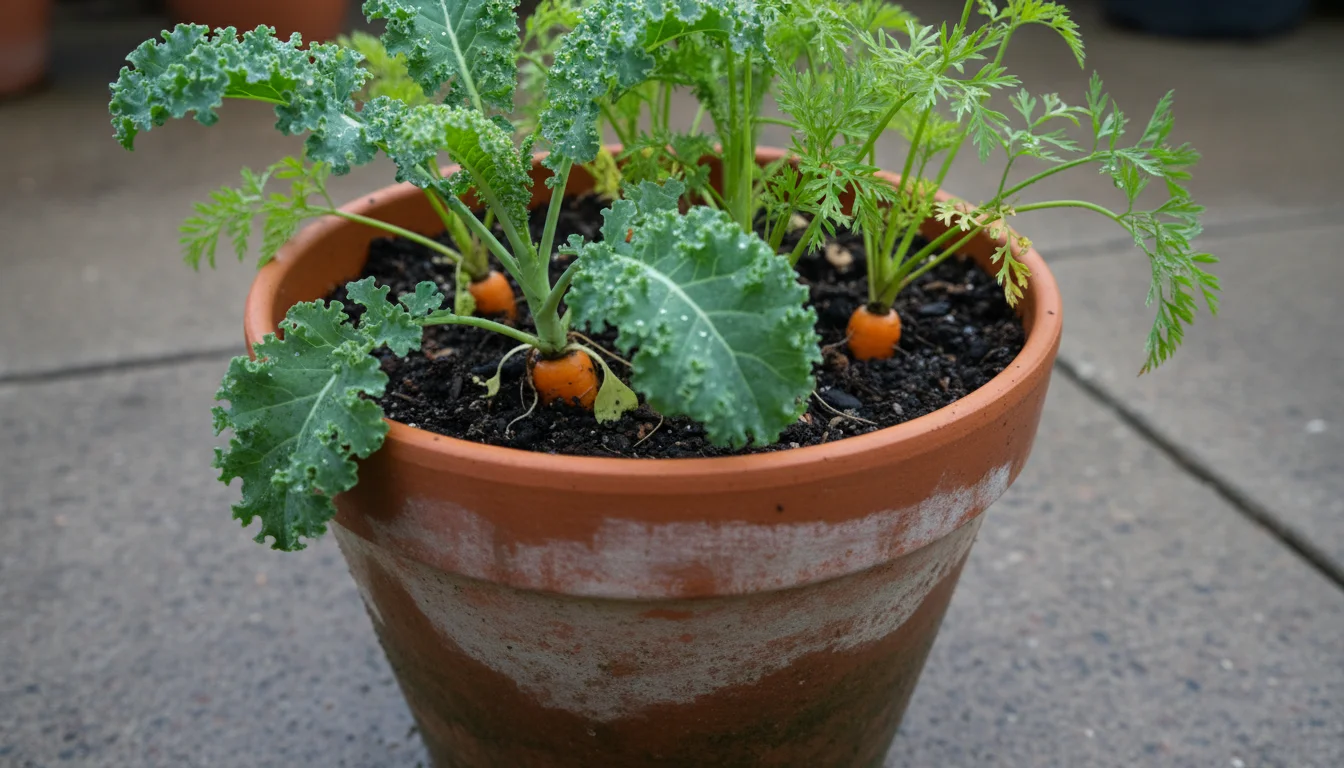
What is Cold Sweetening and Why It Matters for Your Garden
Cold sweetening, also known as cold acclimation or cryoprotection, is a fascinating natural defense mechanism plants use to survive dropping temperatures. When cool-season vegetables like kale and carrots experience temperatures consistently near or just below freezing, their physiological processes shift dramatically. To prevent ice crystals from forming and damaging their cells, plants convert stored starches into soluble sugars. This increased sugar content acts as a natural antifreeze, lowering the freezing point within the plant’s cells. You can think of it as the plant protecting itself from cold damage. This process proves crucial for your garden because it directly impacts the flavor profile of your fall harvest. The higher sugar levels result in a noticeably sweeter taste and often a more tender texture, transforming vegetables that can sometimes be bitter or tough into delicious culinary gems. For instance, kale harvested after a light frost often loses its characteristic pungency, developing a milder, sweeter flavor. Similarly, carrots become significantly sweeter and more succulent. Understanding this mechanism empowers you to work with nature, optimizing your container vegetable gardening for peak flavor. This isn’t just about plant survival, it’s about enhancing your eating experience, making your efforts to grow food in limited spaces even more rewarding. It offers a prime example of improving vegetable flavor in fall simply by letting nature do its work.
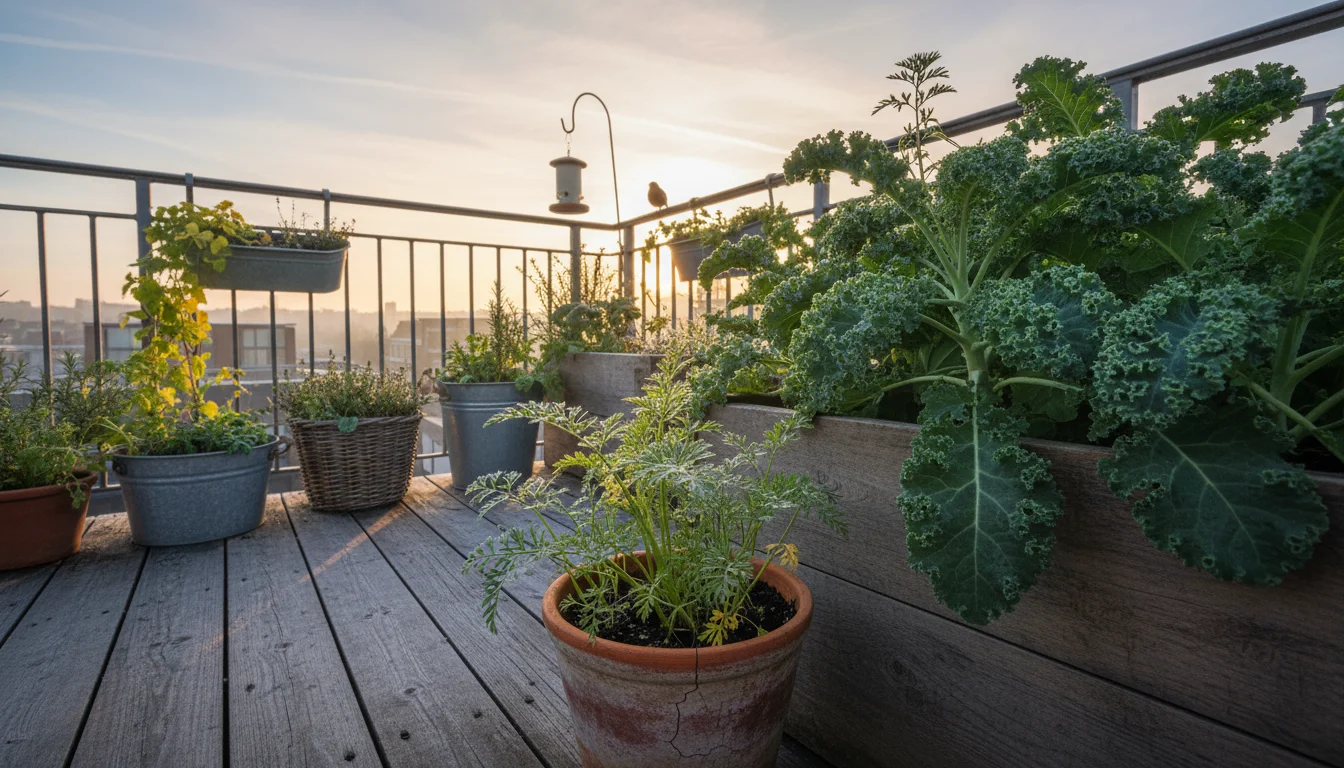
Prime Candidates for the Frosty Sweetness Treatment
Not all vegetables respond to cold sweetening in the same way, but a select group truly excels with this natural process. Focusing on these specific plants ensures your fall harvest delivers maximum sweetness and flavor. Your primary stars for this trick are kale and carrots, but several other cool-season vegetables also benefit significantly from a touch of chill.
- Kale: Almost any variety of kale, including Lacinato, Curly, or Red Russian, becomes noticeably sweeter and less bitter after exposure to a light frost. The cold encourages starch-to-sugar conversion, softening the leaves and enhancing their palatability. You will find that kale harvested after a frost offers a smoother texture, perfect for salads, sautés, or even smoothies. Does frost make kale sweeter? Absolutely, it is one of the most dramatic transformations you will witness.
- Carrots: These root vegetables store carbohydrates primarily as starch. When temperatures drop, these starches convert to sugars to protect the plant, resulting in incredibly sweet and crunchy carrots. Varieties like ‘Danvers Half Long’ or ‘Nantes’ are excellent choices for container growing and respond beautifully to this treatment. When to harvest carrots after frost depends on the severity and duration of the cold, but a light frost generally makes them sweeter.
- Collard Greens: Similar to kale, collards lose some initial bitterness and develop a richer, sweeter flavor profile after cold exposure.
- Brussels Sprouts: A light frost significantly improves the flavor of Brussels sprouts, making them less sulfurous and considerably sweeter. Ensure they mature fully before the cold sets in.
- Parsnips: Like carrots, parsnips are root vegetables storing starches. A few weeks of cold weather, including a light frost, transforms these starches into sugars, giving parsnips their characteristic sweet, earthy flavor.
- Cabbage: Late-season cabbage varieties, especially savoy types, become sweeter and more tender after experiencing cool temperatures.
When planning your container vegetable gardening for the fall, select varieties known for their cold tolerance and good flavor. Look for tags indicating “cold-hardy” or “fall harvest.” Planting these cold sweetening vegetables in appropriate container sizes ensures they have enough space to grow robust root systems, essential for storing the starches that later convert to sugars. This strategic selection is a fundamental fall harvest tip for maximizing the flavor of your produce.
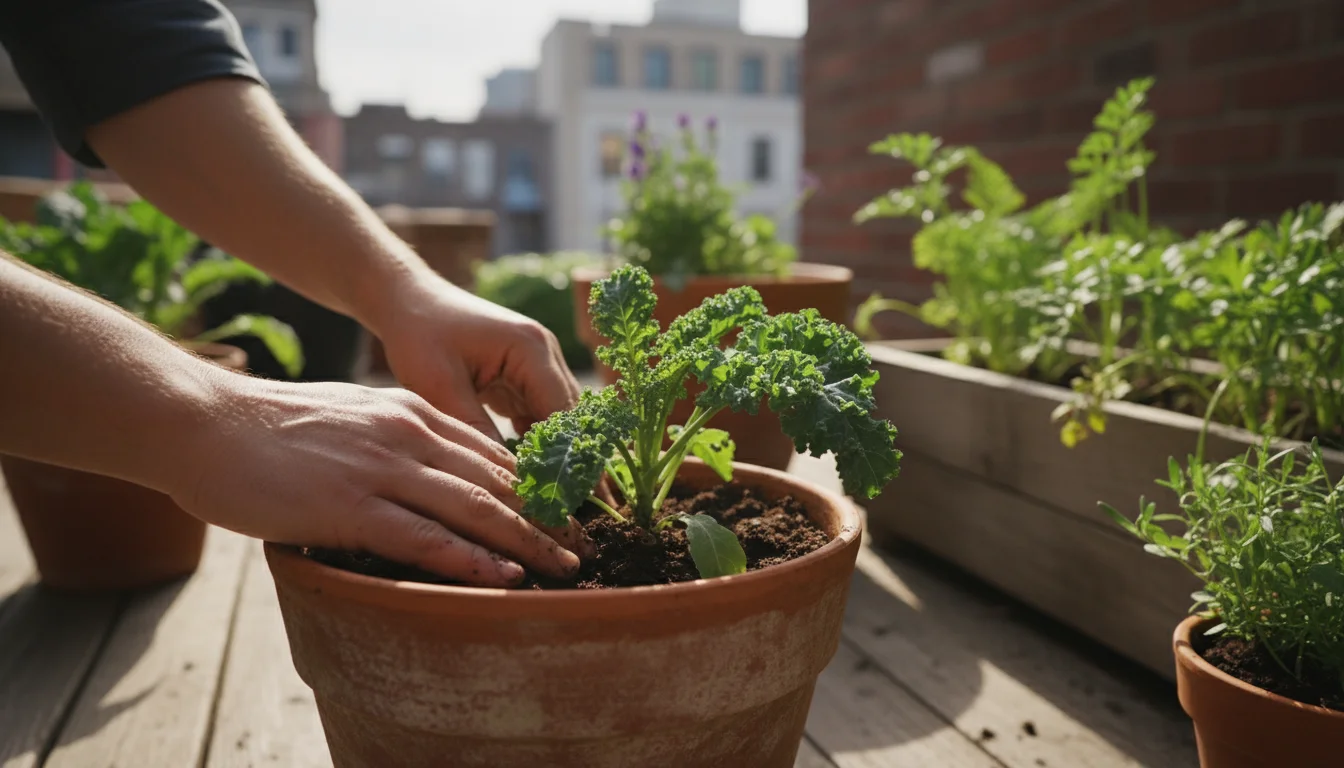
Preparing Your Potted Plants for the Chill
Successful cold sweetening in container vegetable gardening begins long before the first frost warning. Proper preparation ensures your plants are healthy and robust enough to withstand cooler temperatures and effectively convert starches to sugars. Focus on several key areas to set your potted kale and carrots up for success.
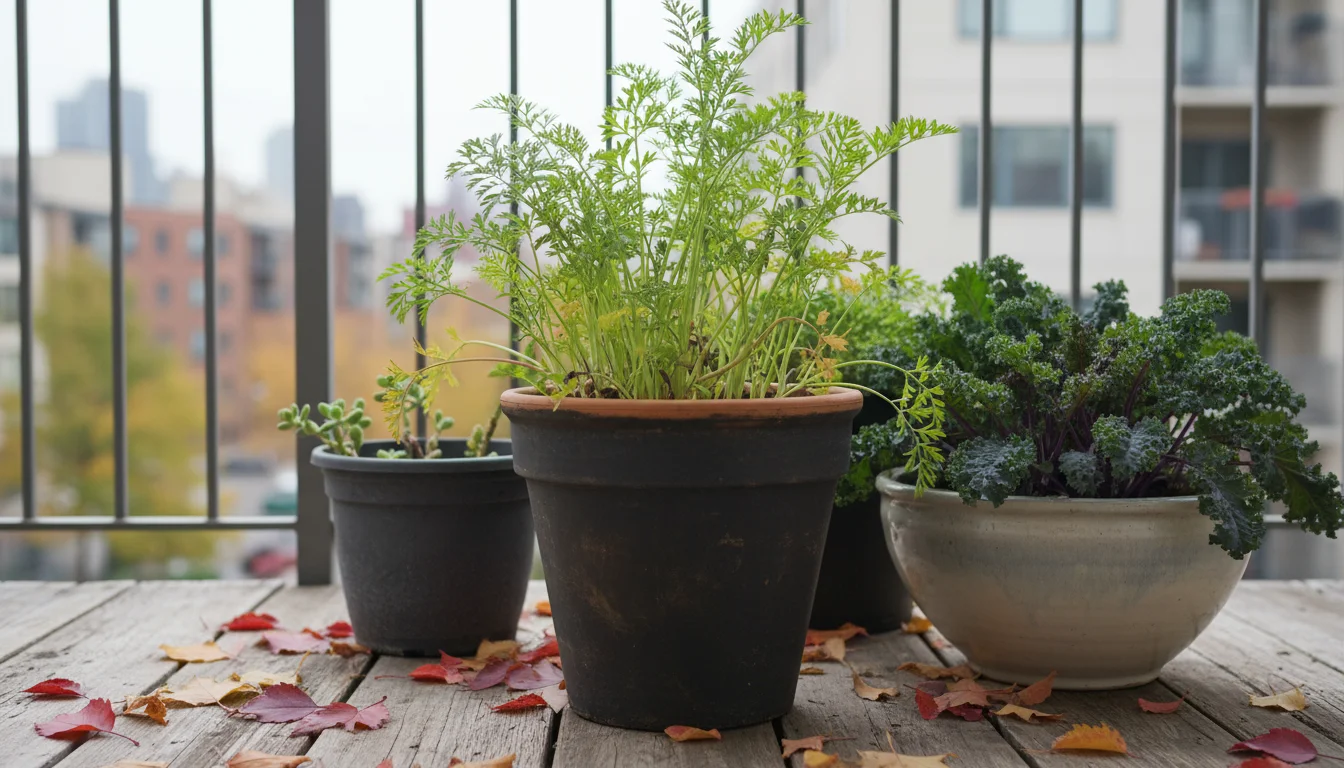
Container Size and Material
Ensure your containers are appropriately sized for your plants. Carrots, for example, require deep pots, at least 12-18 inches (30-45 cm) deep, for their roots to grow long and straight. Kale, with its extensive root system, also benefits from larger pots, ideally 10-12 inches (25-30 cm) in diameter or more. Larger containers offer more insulation against temperature fluctuations than smaller ones. Materials like terracotta or ceramic provide some insulation, but plastic pots can dry out faster or transmit cold more quickly. Darker colored pots absorb more heat during sunny fall days, which can be beneficial, but they also radiate heat faster at night.
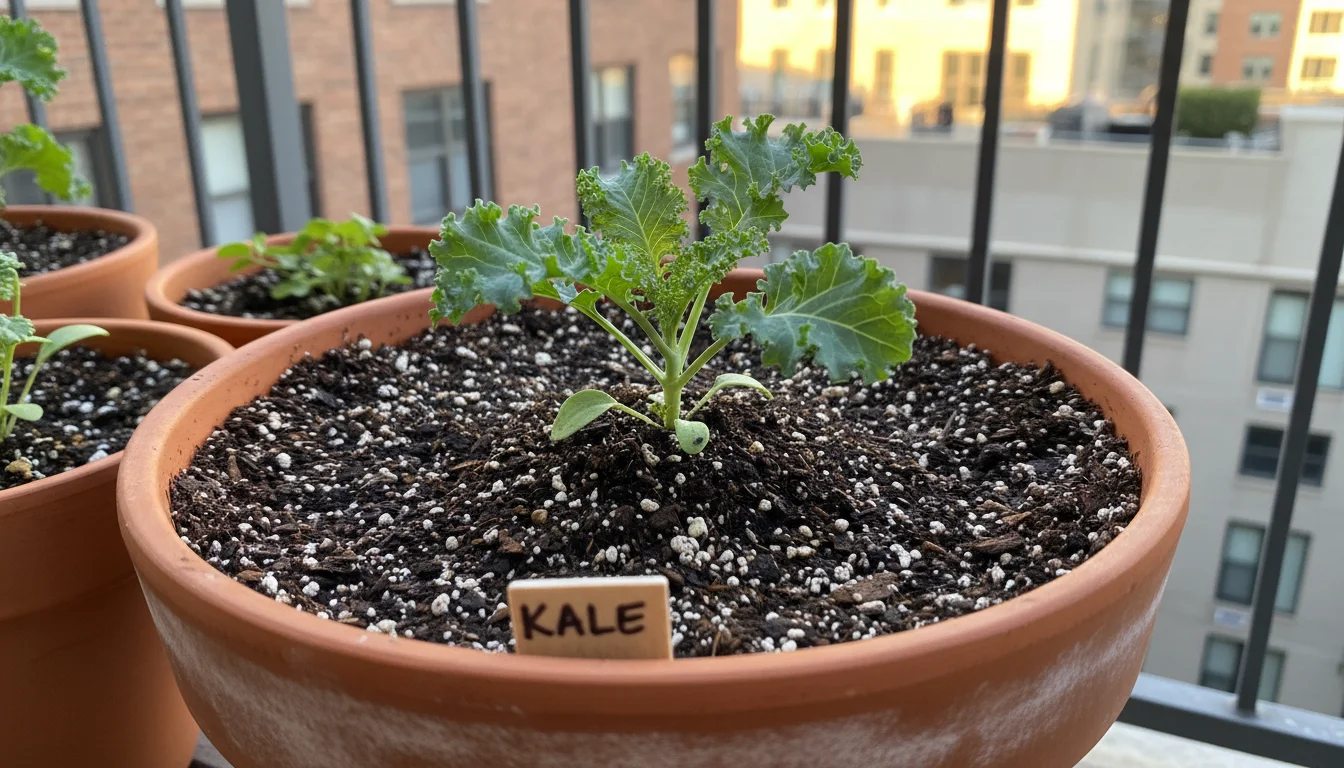
The Right Soil Mix
Your potting mix is crucial. Use a high-quality, well-draining potting mix specifically formulated for containers. “Well-draining” means water moves easily through the soil, preventing waterlogging which can lead to root rot. Good drainage proves especially important in cooler weather when evaporation slows. An ideal mix retains some moisture but never stays soggy. You can enhance drainage by adding perlite or vermiculite to your potting mix. Healthy soil supports a strong root system, vital for the plant’s ability to undergo the cold sweetening process effectively.

Consistent Watering Practices
As temperatures drop, your plants’ water needs decrease. Overwatering can become a significant problem in fall, leading to root diseases. Instead, check soil moisture regularly by sticking your finger about an inch or two into the soil. Water only when the top layer feels dry. Ensure your containers have adequate drainage holes to prevent water from sitting at the bottom. Proper watering keeps plants hydrated without drowning them, promoting overall plant health and resilience.
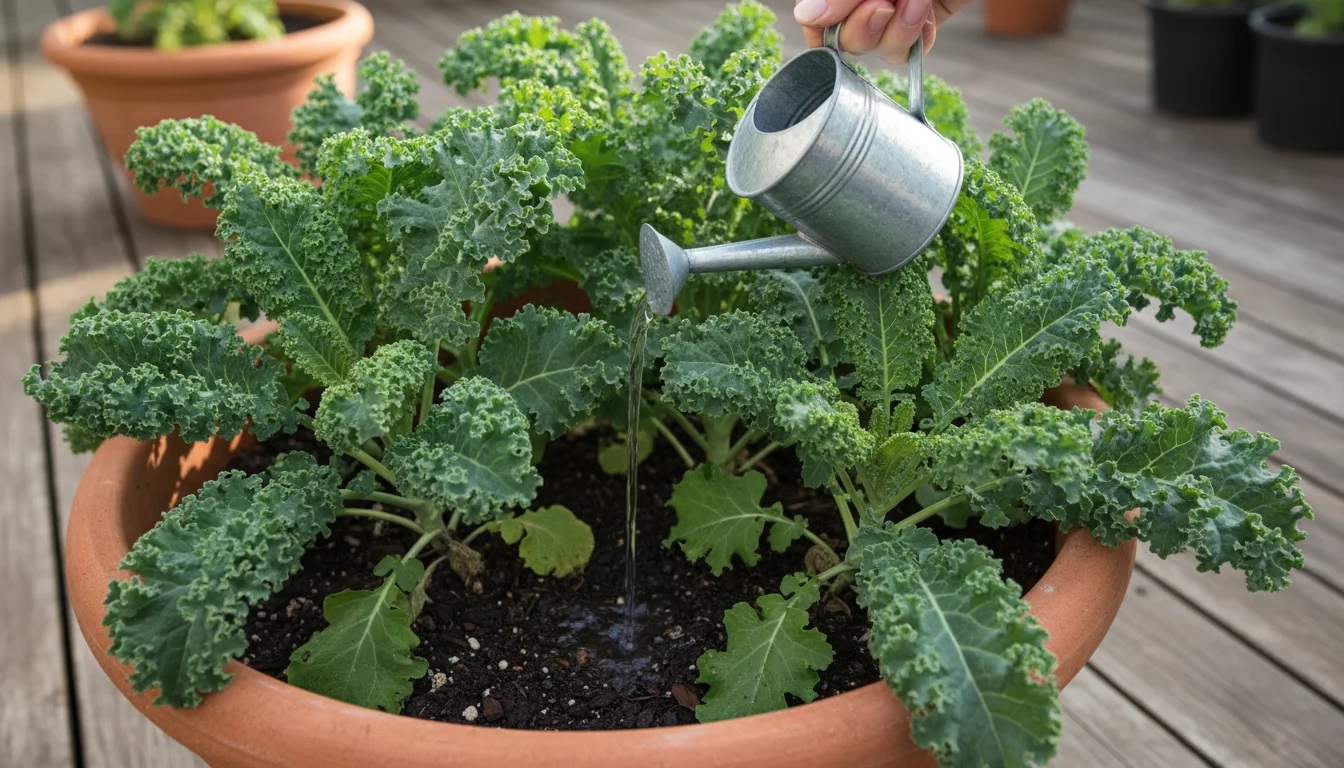
Nutrient Management
Continue to provide adequate nutrients throughout the fall. A balanced liquid fertilizer applied every two to four weeks supports ongoing growth. Avoid excessive nitrogen as you approach frost, as this encourages leafy growth at the expense of root development or sugar production in root crops. A fertilizer with a slightly higher potassium content can help improve plant resilience and overall health. Strong, healthy plants better handle temperature stress and perform the biochemical conversions leading to sweeter vegetables.
By focusing on these preparatory steps, you build a resilient foundation for your container vegetable gardening. Your plants will be ready to embrace the light chill and deliver their sweetest, most flavorful fall harvest.

Timing is Everything: When to Expect Your First Frost
Successfully implementing the ‘first frost’ trick hinges on accurately anticipating and recognizing the opportune moment. A light frost, not a hard freeze, is your goal. This requires understanding your local climate and staying vigilant with weather forecasts. A light frost generally means temperatures drop to between 29°F and 32°F (-1.6°C and 0°C), causing ice crystals to form on surfaces, but typically not leading to widespread plant tissue damage. A hard freeze, on the other hand, involves temperatures consistently below 28°F (-2.2°C) for several hours, causing significant damage or even killing tender plants.

Monitoring Local Forecasts
Your local weather forecast is your most valuable tool. Pay close attention to nighttime low temperatures as fall progresses. Agricultural extension services or local weather apps often provide frost advisories or warnings specific to your area. Many regions have an average “first frost date,” but this is merely an average. Actual conditions vary year to year. Look for predictions of temperatures dipping just below freezing for a short period, especially overnight.
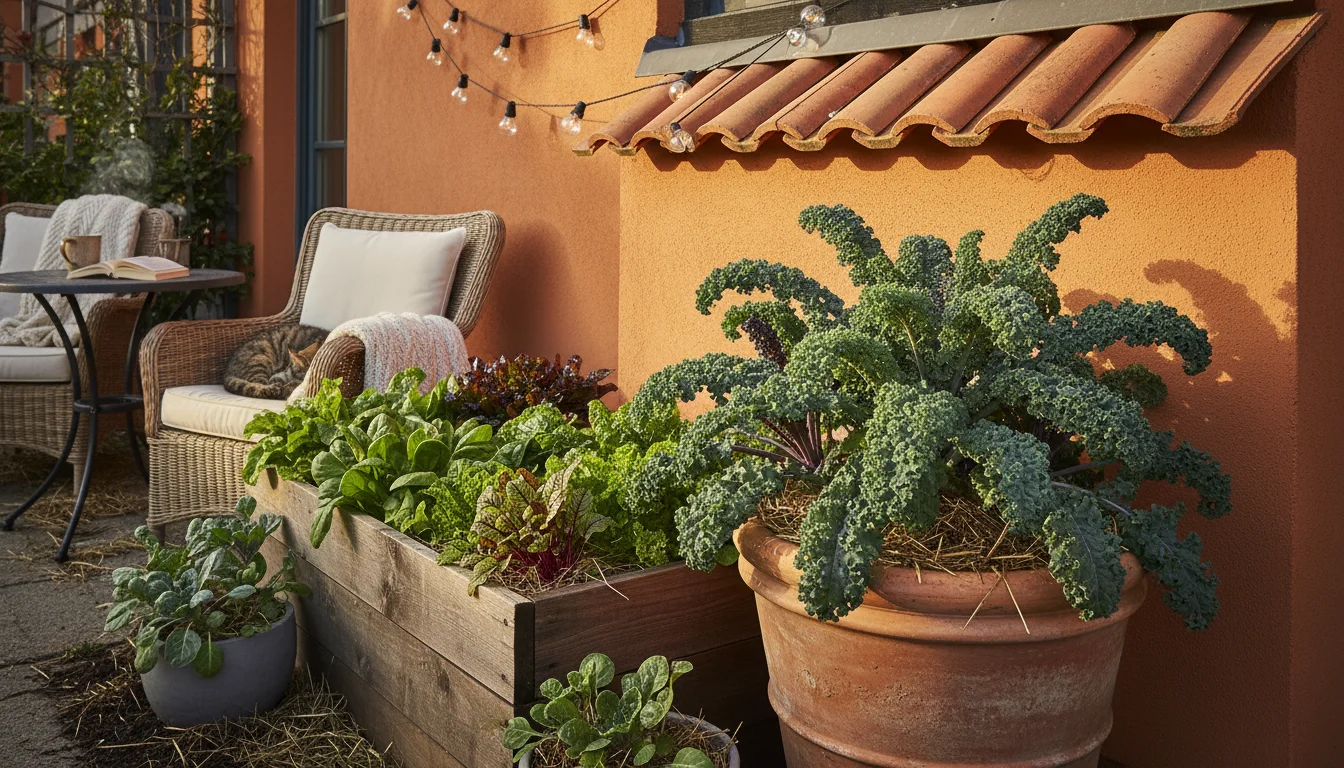
Understanding Your Microclimate
Even within a small garden or patio, you have microclimates. Areas against a warm house wall, under an overhang, or surrounded by concrete might stay slightly warmer than exposed areas. You might find containers placed closer to a building or under a protective structure experience a lighter, less damaging frost than those in an open, windy spot. Observe how temperatures feel in different parts of your space during cool evenings. This understanding helps you decide where to position your cold sweetening vegetables.

Indicators from Nature
Beyond forecasts, nature provides clues. Shorter daylight hours, consistently crisp air, and leaves beginning to change color all signal colder temperatures approaching. When you see morning dew that lingers or even turns frosty on unprotected surfaces, you know you are getting close to that ideal ‘first frost’ condition. For container vegetable gardening, this early autumn period is critical for maximizing flavor. Knowing when to harvest carrots after frost, or when the ideal chill has settled on your kale, becomes intuitive as you observe these signs.
Your goal is to allow your plants to experience that first beneficial chill, but also to be prepared to protect them if a deep, damaging freeze threatens. This balance allows the cold sweetening process to occur optimally, significantly improving vegetable flavor in fall.
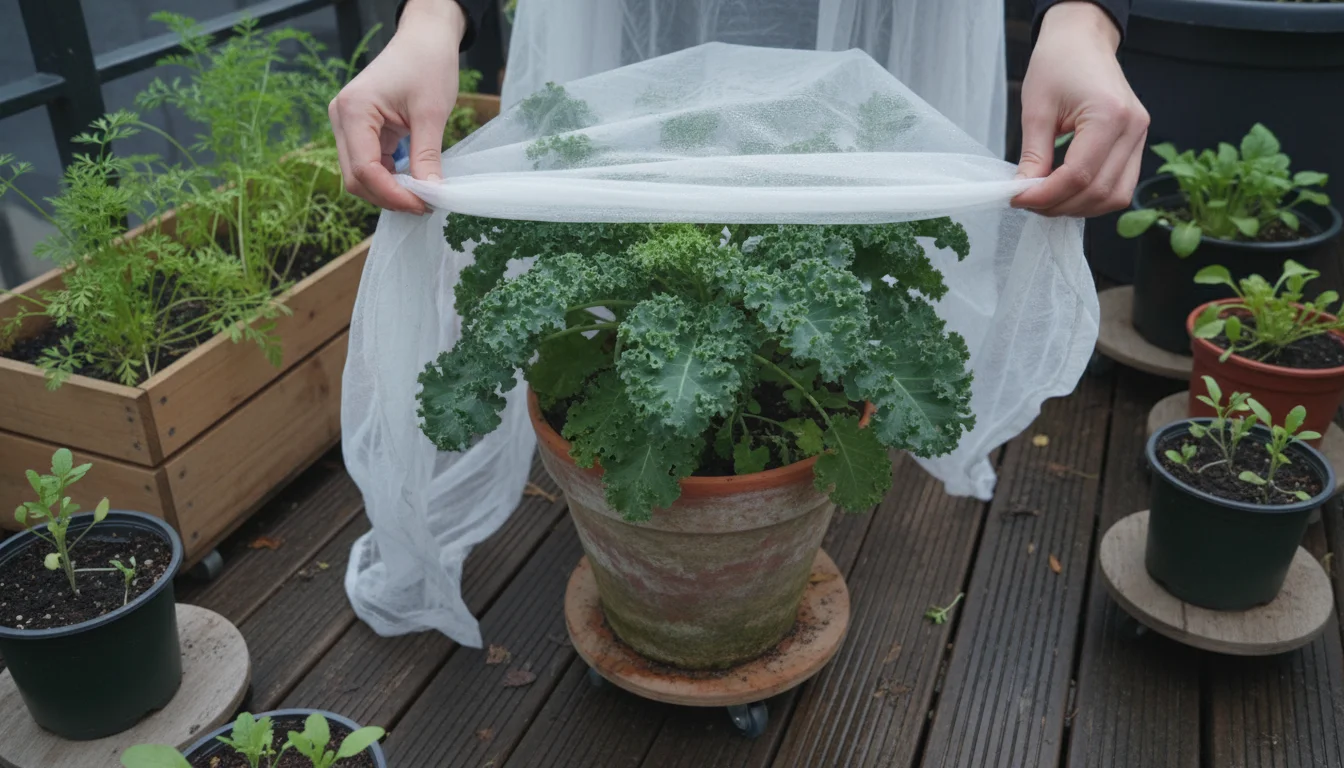
Navigating the Chill: Protecting and Monitoring Your Plants
Once you anticipate that crucial first frost, your role shifts from preparing to protecting and monitoring. The aim is to let your cold sweetening vegetables experience just enough chill to trigger sugar production without succumbing to deep freeze damage. For container vegetable gardening, you have an advantage: mobility.
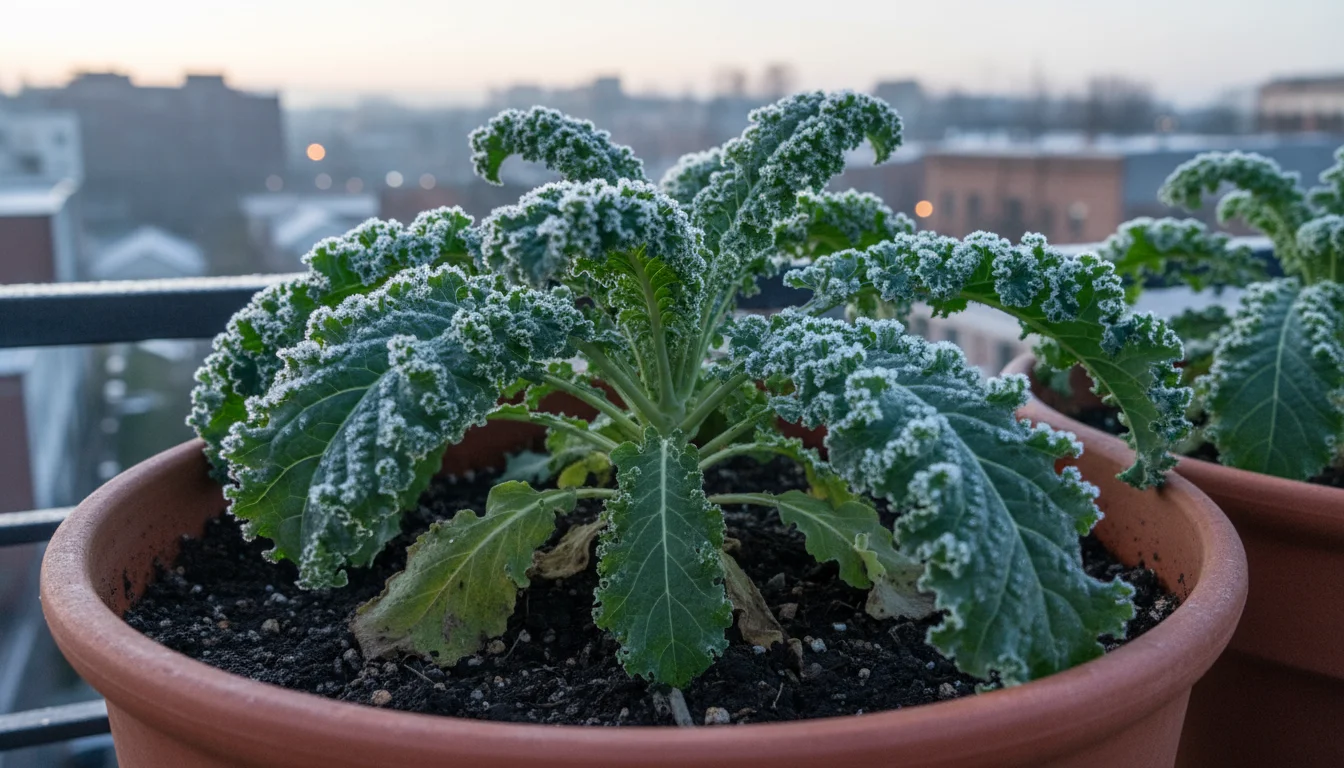
Distinguishing Light Frost from Hard Freeze
As discussed, a light frost (29-32°F or -1.6°C to 0°C for a few hours) is beneficial. A hard freeze (below 28°F or -2.2°C for several hours) can be detrimental. You must differentiate these to make informed decisions. A good indicator of a light frost is ice crystals forming on surfaces, but the ground remains unfrozen. If the ground freezes hard, or if temperatures are predicted to stay well below freezing for an extended period, you face a hard freeze.

Strategic Placement of Containers
This is where your container advantage truly shines. Before a forecasted hard freeze, move your potted kale, carrots, and other susceptible cold sweetening vegetables to a more sheltered location. This could be:
- Close to your house wall: Walls retain residual heat and offer some protection.
- Under an overhang or porch: This protects from frost falling directly onto foliage.
- Into a garage or shed: For prolonged hard freezes, moving plants indoors to an unheated space (that stays above freezing) for a day or two can save them. Remember to bring them back out when temperatures moderate to continue the sweetening process.
- Grouping containers: Placing pots close together helps them share warmth and insulates their root zones.

Providing Temporary Protection
For plants that cannot be easily moved, or for lighter frost events, you can provide temporary covers. Simple garden fabrics, old sheets, blankets, or even cardboard boxes can shield plants. Drape these over your plants in the late afternoon, ensuring the cover extends to the ground to trap warmth. Remove them in the morning once temperatures rise above freezing. Avoid using plastic sheeting directly on foliage, as it conducts cold and can cause more damage if it touches the leaves.

Mulching for Root Protection
For carrots, which store sugars in their roots, protecting the soil is paramount. Apply a thick layer of organic mulch, such as straw, shredded leaves, or wood chips, to the top of the soil in your carrot containers. This insulates the soil, preventing it from freezing solid and protecting the carrot roots from damage. A good mulch layer also helps retain moisture, reducing stress on the plants. This is an essential fall harvest tip for root crops, ensuring you can still enjoy fresh carrots even after several light frosts.
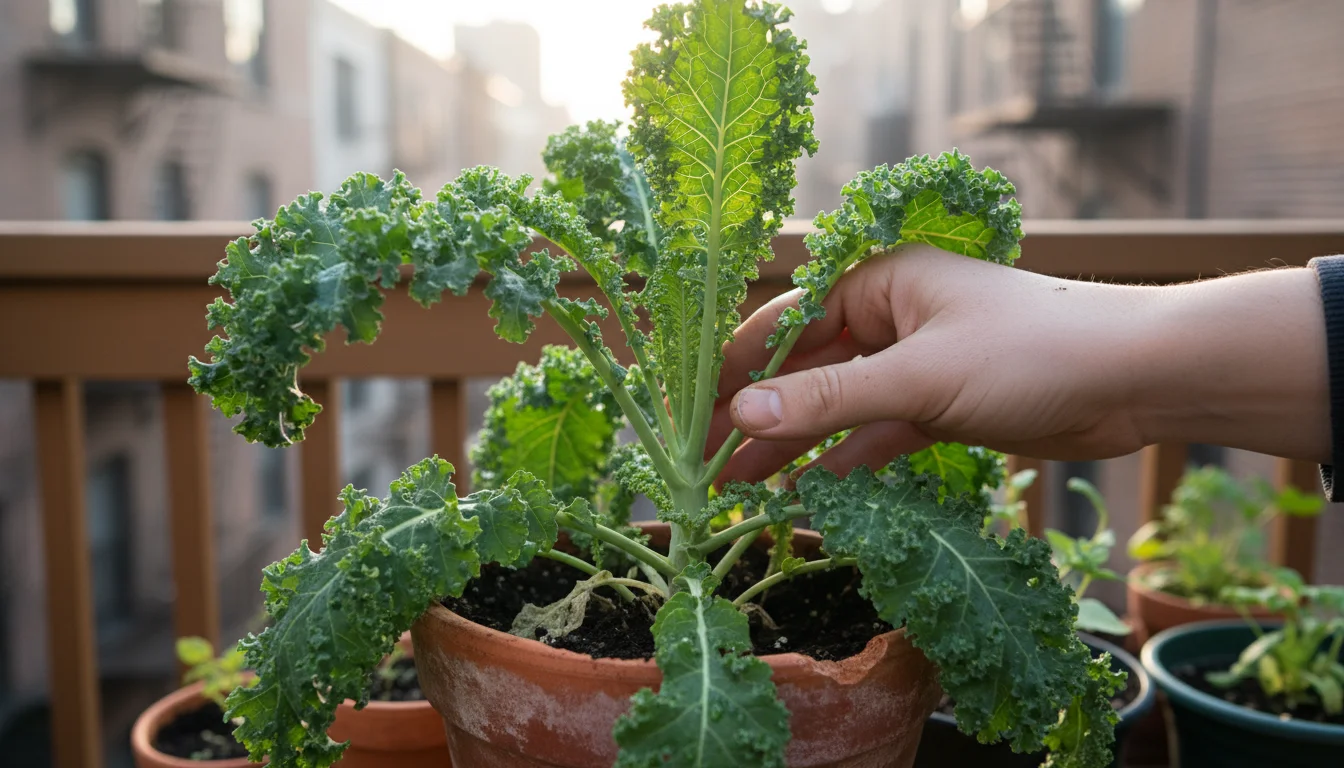
Monitoring Plant Health
After a frost, inspect your plants. A light frost might cause slight wilting of outer leaves on kale, but the inner leaves should remain firm. Carrots should show no visible damage. If you see significant blackening or mushy areas on foliage, it indicates a harder freeze than anticipated. Remove damaged leaves to prevent disease, but often the plant will recover, especially if its root system remains healthy. Regular monitoring helps you gauge the effectiveness of your protection strategies and adjust as needed, ensuring your container vegetable gardening efforts yield the sweetest possible results.
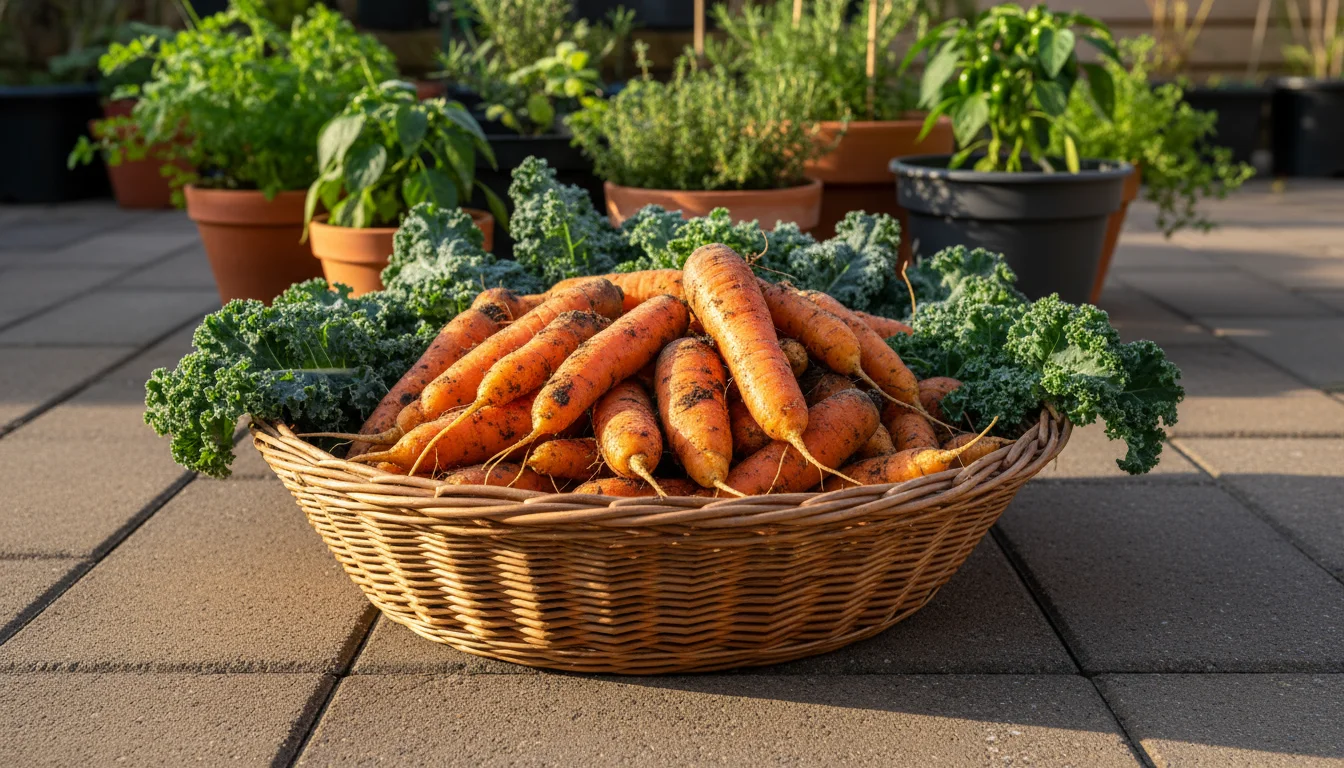
The Harvest Moment: Reaping Sweet Rewards
After carefully nurturing your cold sweetening vegetables through the autumn chill, the moment arrives to collect your flavorful reward. Knowing precisely when to harvest carrots after frost and how to gather your kale ensures you capture the peak of their enhanced sweetness and tenderness. This step is as crucial as the chill itself for improving vegetable flavor in fall.
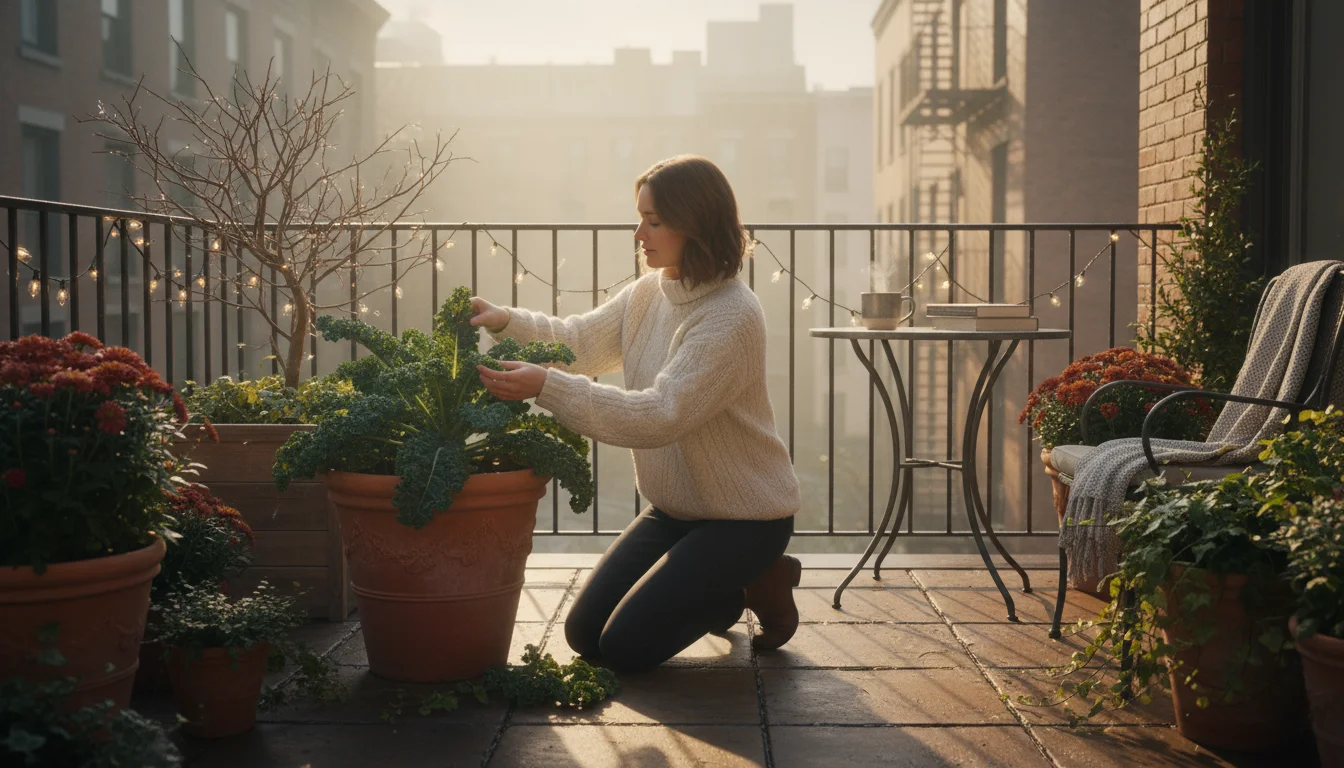
When to Harvest Kale After Frost
For kale, you typically want to harvest after the first light frost. The ideal scenario involves temperatures dipping into the low 30s°F (around 0°C) overnight, followed by a rise above freezing during the day. You can begin harvesting kale leaves a day or two after this event. You will notice the leaves feel more pliable and taste significantly less bitter. Continue harvesting kale throughout the fall and even into early winter, as long as temperatures do not consistently drop below the low 20s°F (-6°C). You can pick individual outer leaves, allowing the plant to continue producing from its center, or harvest the entire plant if a hard freeze is imminent. Avoid harvesting immediately after a deep freeze, as the leaves might be frozen solid and prone to breakage. Wait for them to thaw naturally.

When to Harvest Carrots After Frost
Carrots are even more tolerant of cold than kale and often sweeten further with repeated light frosts. You can leave carrots in the ground, or in their containers, well into winter in many climates, provided the soil does not freeze solid. A layer of mulch, as discussed, proves invaluable for extending this harvest period. The general rule is to harvest carrots any time after the first light frost and before a prolonged, hard freeze locks the soil. If your containers are exposed to hard freezes, harvest them or bring the containers indoors to an unheated space. To harvest, gently loosen the soil around the carrot with a small trowel or your hand, then pull the carrot carefully by its greens. Avoid yanking, as this can break the root. The longer carrots remain in the cold, the more sugar they accumulate, up to a point where extreme cold or prolonged freezing can damage them. This flexibility makes them fantastic cold sweetening vegetables for extended fall harvest tips.
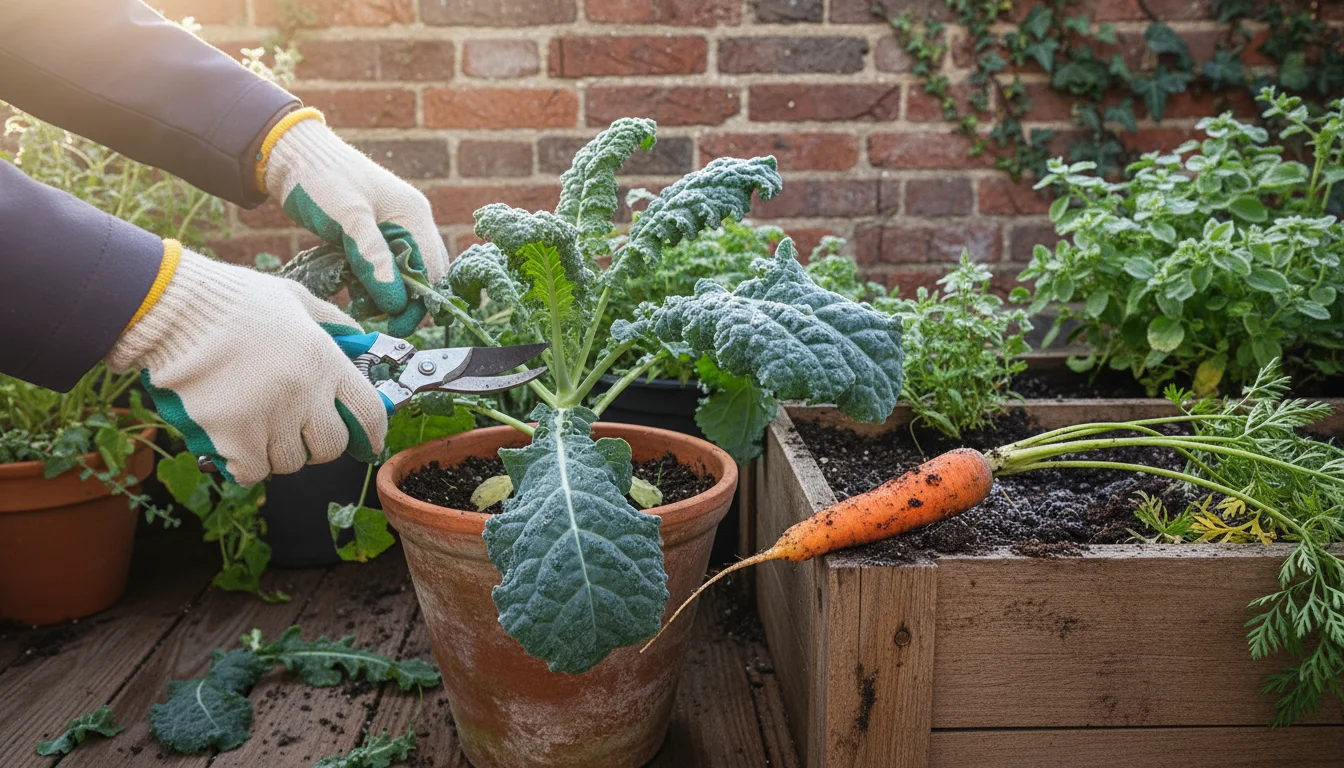
Optimal Harvesting Techniques for Container Gardens
In container vegetable gardening, precise harvesting is key. For kale, use clean pruners or a sharp knife to cut individual leaves from the bottom of the plant upwards. Leave the top central leaves to allow for continued growth. For carrots, grasp the greens firmly near the soil line and pull straight up. If resistance is significant, gently work a trowel around the carrot to loosen the soil without damaging the root. Harvest only what you need, as both kale and carrots store best when left in the cold soil until ready for use. This method ensures your fresh produce maintains its peak sweetness and texture, truly demonstrating how much frost makes kale sweeter and carrots richer.

Beyond the First Frost: Extending Your Fall Harvest
The first frost signals enhanced flavor, not necessarily the end of your container vegetable gardening season. With a few proactive fall harvest tips, you can significantly extend your enjoyment of cold sweetening vegetables, even in small spaces. This strategy helps you get more out of your existing plants and even prepares you for future bounties.
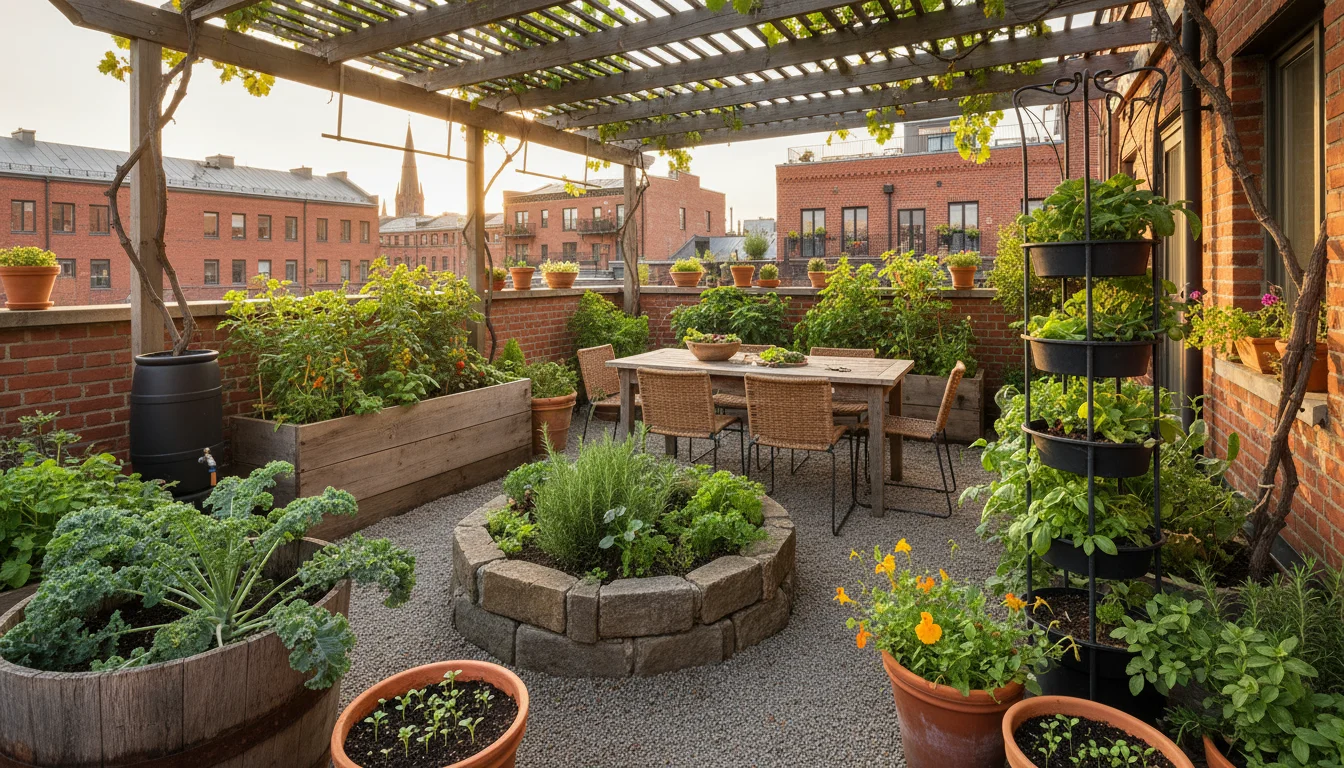
Succession Planting for Continuous Yield
Think ahead. To ensure a continuous supply of sweet, tender greens and roots, consider succession planting cool-season crops. Plant kale, carrots, collards, and even some lettuce varieties every 2-3 weeks from late summer into early fall. This ensures you have plants at various stages of maturity, so some are ready for the ‘first frost’ trick, while others mature later, extending your harvest window. When one pot finishes, you have another waiting to take its place. This is a hallmark of efficient container vegetable gardening.

Simple Season Extension Techniques
You do not need a greenhouse to extend your season. Simple, low-cost methods can protect your cold sweetening vegetables from harsher freezes:
- Cloches: Individual plant covers made from recycled plastic bottles or clear plastic domes can protect single plants from light frosts and trap warmth.
- Cold Frames: You can achieve a mini-greenhouse effect by placing a simple frame, often made from wood and covered with clear plastic or an old window, over a group of potted plants. This significantly extends the growing and harvesting period.
- Row Covers: These lightweight fabrics drape over plants, providing several degrees of frost protection while allowing light and water to penetrate. Anchor them securely to prevent wind damage. These are excellent for protecting kale from more severe freezes, allowing you to continue enjoying sweeter leaves.
- Strategic Relocation: As mentioned, moving containers to sheltered spots, like against a south-facing wall, under eaves, or into an unheated garage during severe cold snaps, buys you valuable time and prevents plant loss.
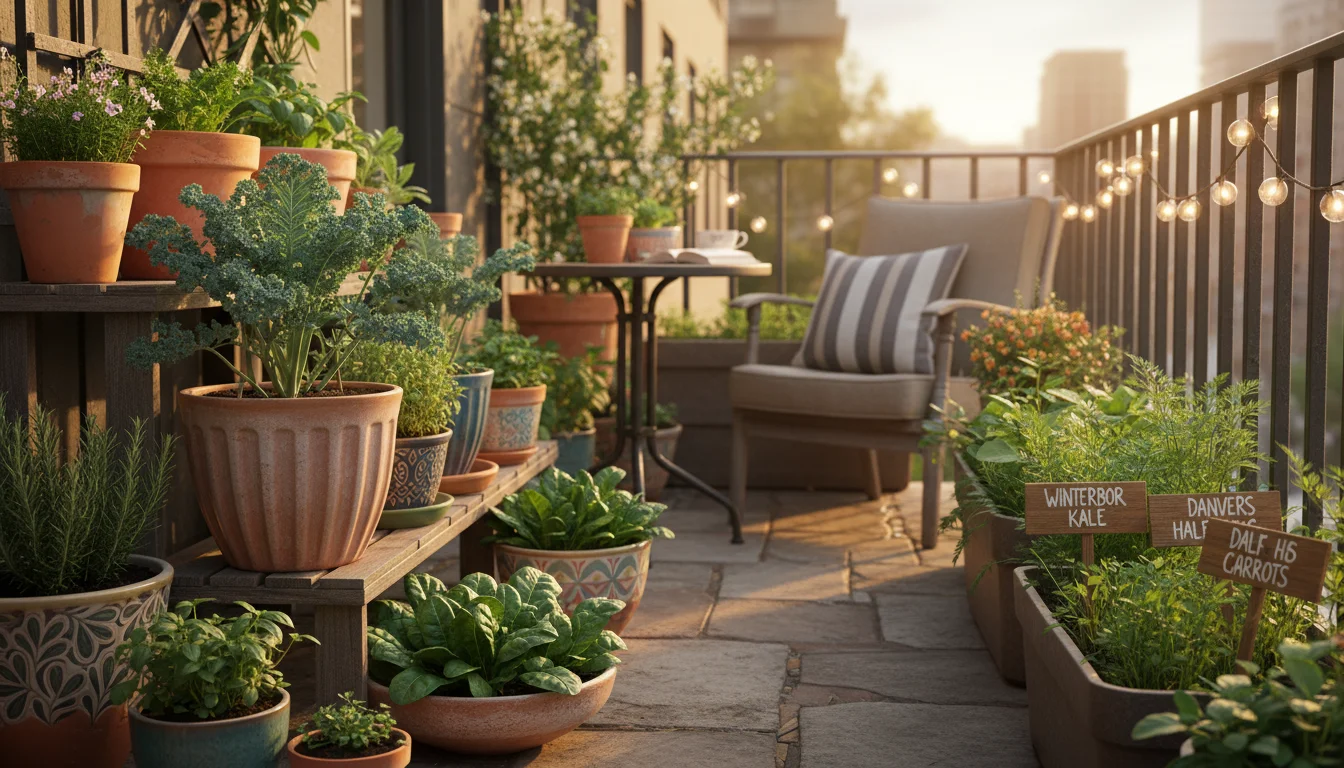
Selecting Late-Season Varieties
When choosing seeds or starts, look for varieties specifically bred for cold tolerance or late-season production. Many seed catalogs indicate “overwintering” or “very cold hardy” types of kale, spinach, or root vegetables. These varieties naturally tolerate lower temperatures, allowing them to benefit from the cold sweetening process for longer periods without damage. This practical fall harvest tip starts with careful planning.
By combining succession planting, basic season extension, and smart variety selection, you transform your small-space garden into a long-producing asset. You maximize your yield of improving vegetable flavor in fall, truly making the most of your container vegetable gardening efforts well beyond what you might have thought possible.
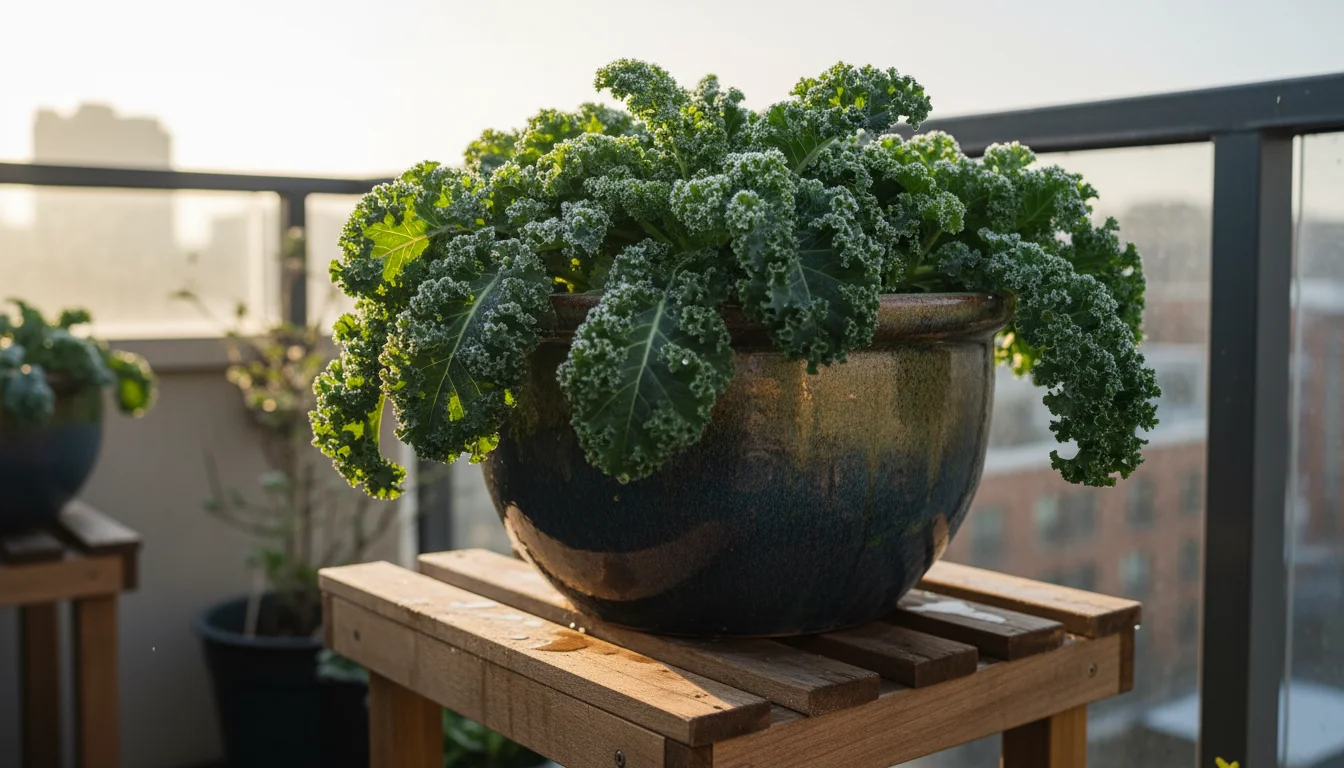
Common Missteps to Avoid for Maximum Sweetness
While the ‘first frost’ trick proves remarkably effective, a few common errors can reduce its impact or even harm your plants. Avoiding these pitfalls ensures your cold sweetening vegetables achieve their peak flavor and longevity. Your attention to these details directly translates into a more successful fall harvest.
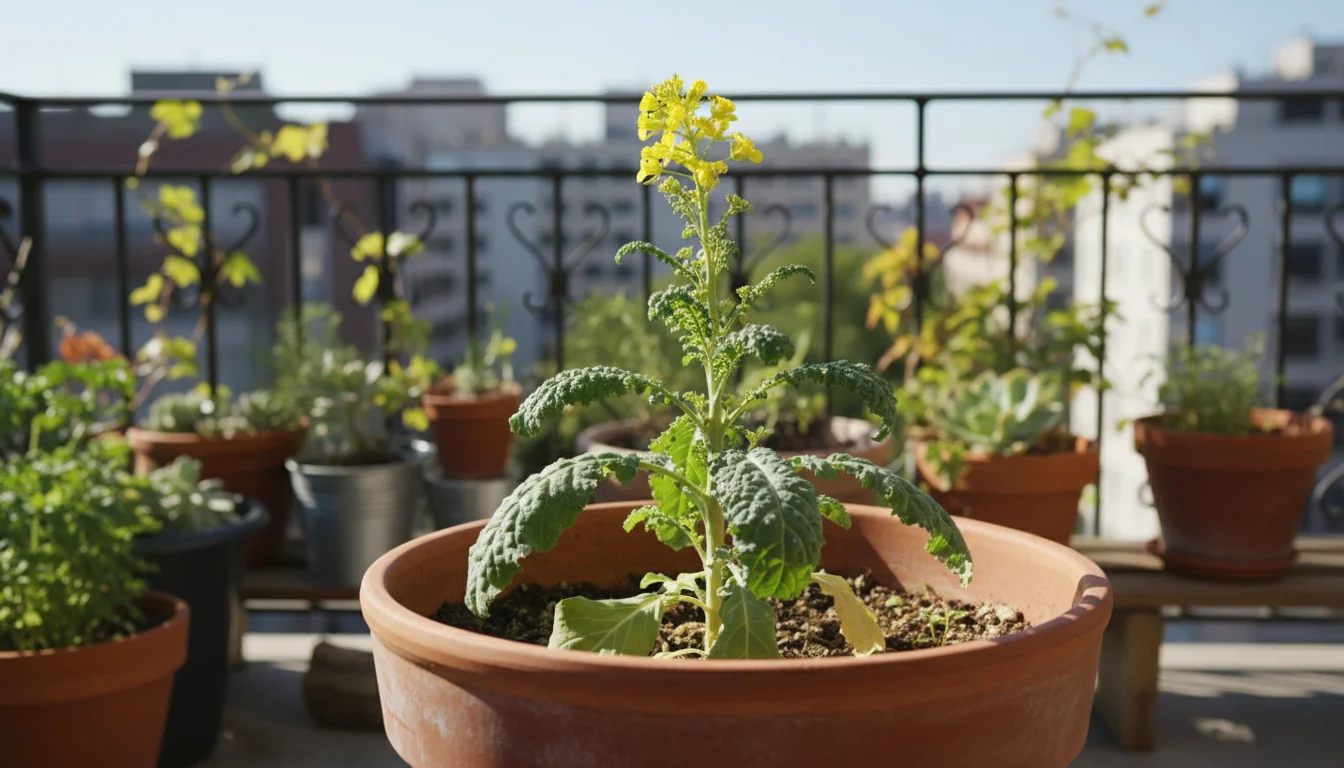
Planting Too Late or Too Early
Timing your initial planting is critical. If you plant too late in the fall, your plants might not reach sufficient maturity before the cold sweetening period begins. Small, underdeveloped plants have fewer starches to convert into sugars and are more vulnerable to frost damage. Conversely, planting too early can expose cool-season crops to excessive summer heat, which stresses them and can lead to bolting prematurely, or going to seed, especially for kale. Aim to plant kale and carrots in late summer or early fall, allowing 6-8 weeks of good growth before your average first frost date.
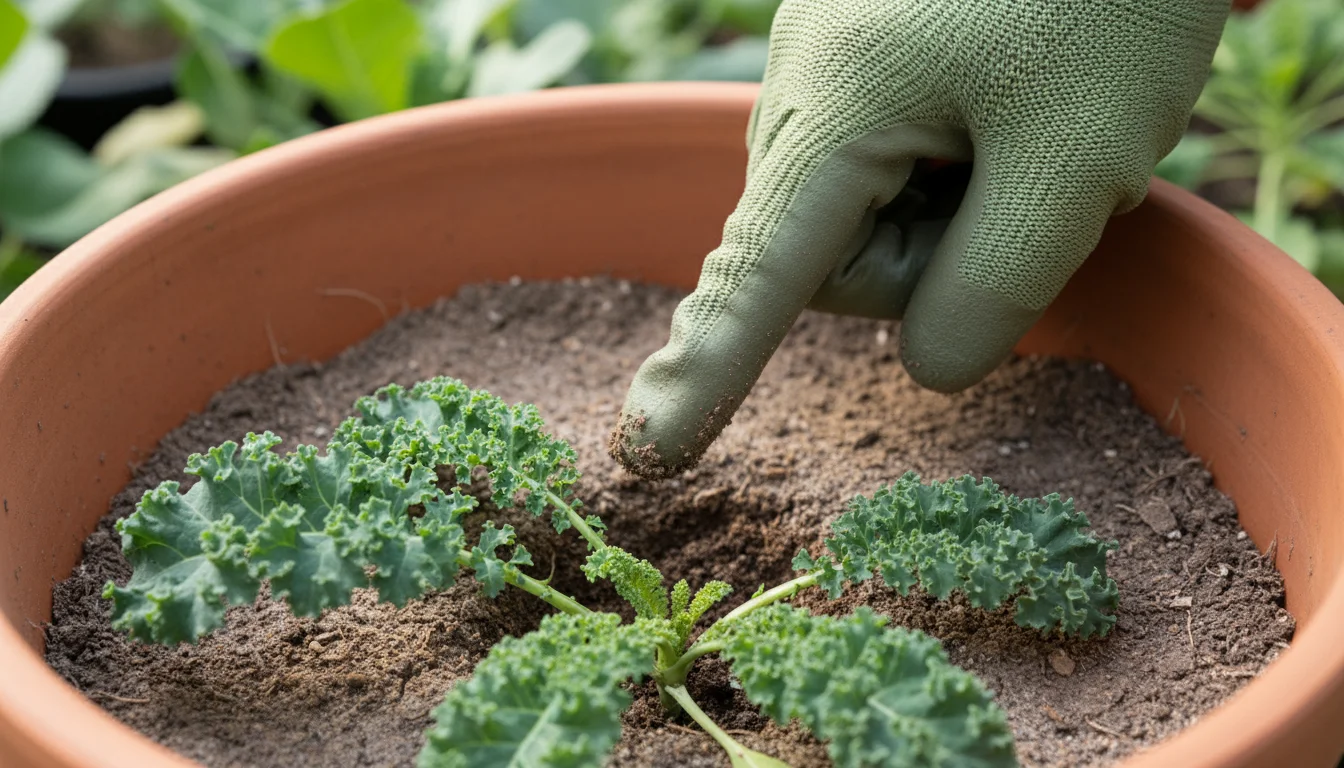
Overwatering in Cold Weather
As temperatures drop, evaporation slows significantly. Overwatering becomes a major problem, especially in containers. Saturated soil in cold conditions leads to root rot, depriving your plants of oxygen and making them highly susceptible to disease and freeze damage. Always check soil moisture with your finger before watering. Water deeply but infrequently, allowing the top few inches of soil to dry out between waterings. This is particularly important when considering when to harvest carrots after frost, as soggy soil can also negatively impact their texture.
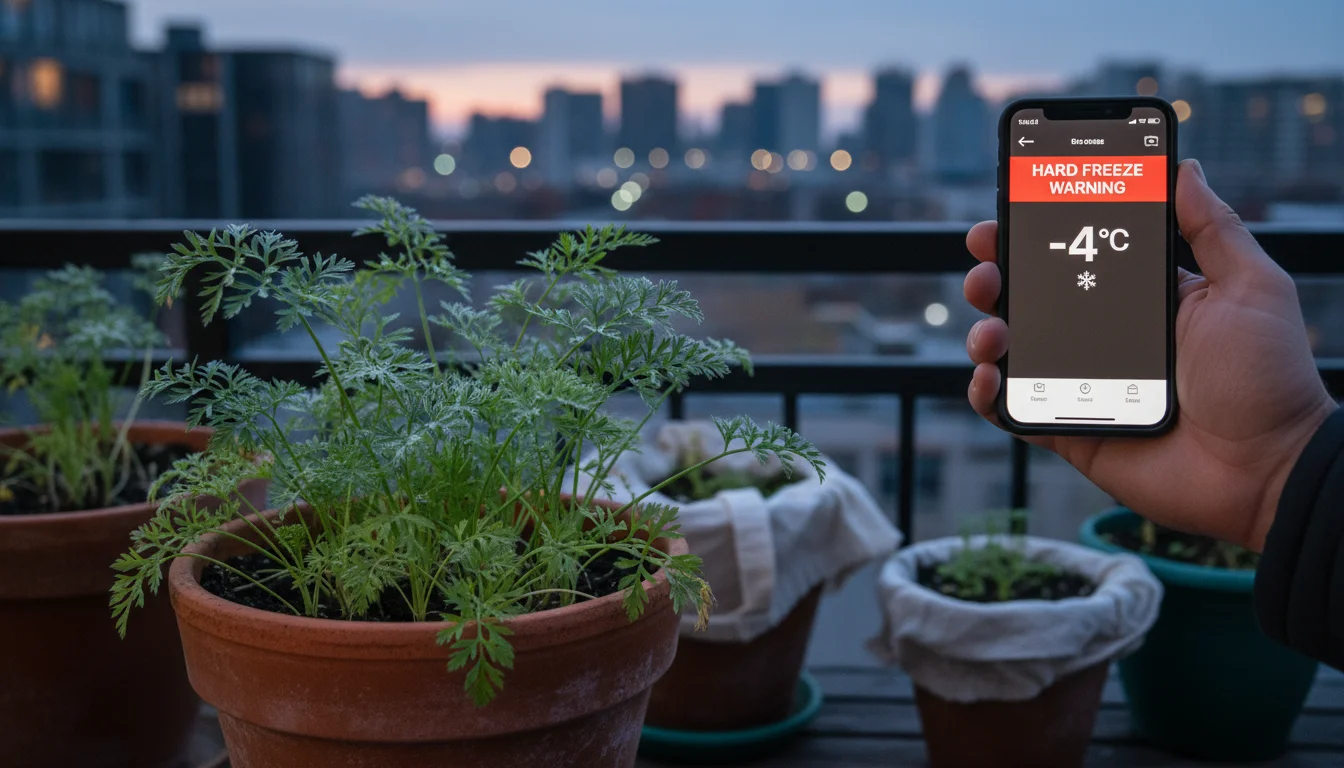
Ignoring Hard Freeze Warnings
While a light frost is beneficial, a hard freeze, temperatures consistently below 28°F (-2.2°C) for several hours, can kill many cold-tolerant vegetables, especially if unprotected. Do not mistake the ‘first frost’ trick for an invitation to abandon your plants to extreme cold. Always monitor weather forecasts. If a hard freeze is predicted, take protective measures: move containers indoors, cover plants, or harvest proactively. Failing to do so results in frozen, mushy plants rather than sweeter ones.
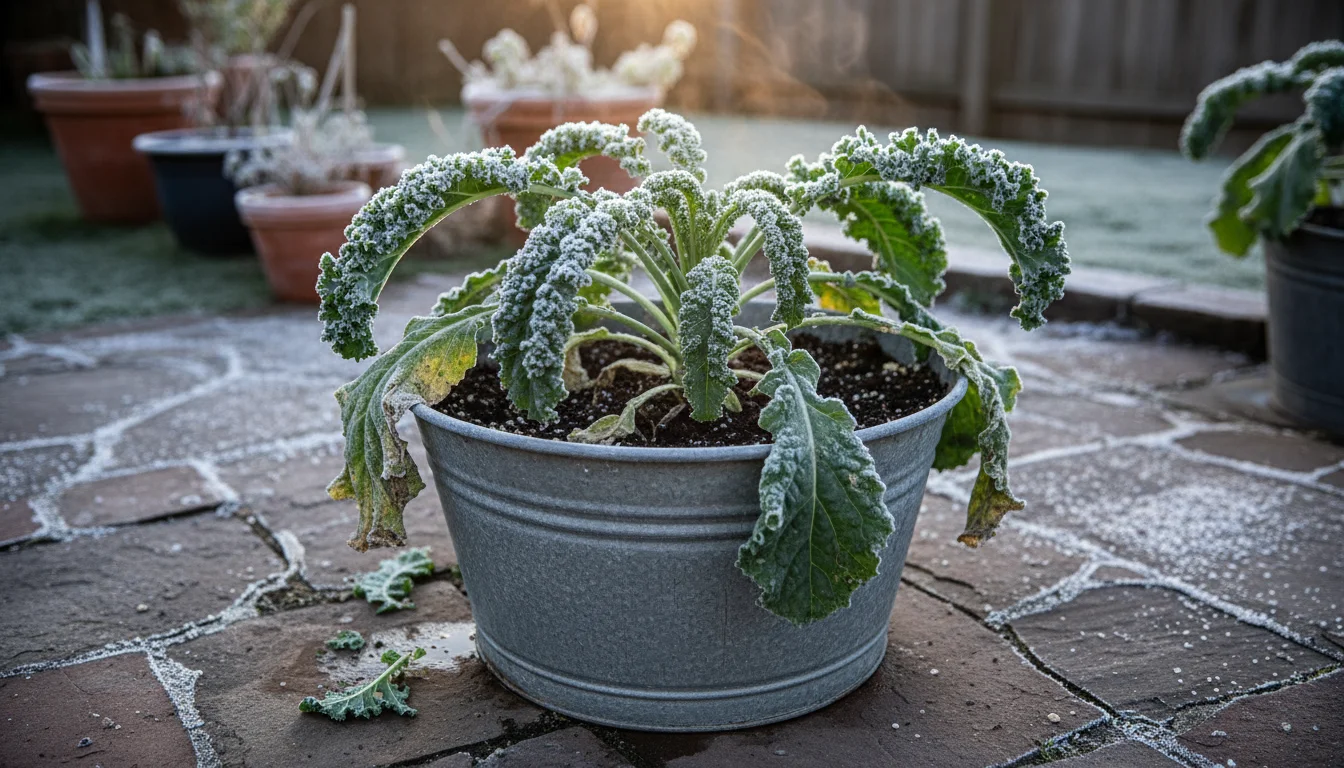
Harvesting Immediately After a Hard Freeze
If your kale or other leafy greens freeze solid, resist the urge to harvest them immediately. Frozen plant tissue is extremely brittle and will shatter, making it unusable. Wait until the leaves have thawed naturally, typically in the morning sun, before attempting to harvest. While some leaves might show damage, often the inner parts of the plant remain viable. This applies particularly to leafy cold sweetening vegetables.

Neglecting Container Drainage
Poor drainage exacerbates overwatering issues. Ensure all your containers have sufficient drainage holes. If you use saucers underneath, empty any standing water promptly to prevent roots from sitting in soggy conditions. Good drainage is foundational to healthy container vegetable gardening, especially during the colder months when plants are already under some environmental stress.
By diligently avoiding these common missteps, you maximize the benefits of the ‘first frost’ trick, ensuring your improving vegetable flavor in fall efforts are met with abundant, delicious results.
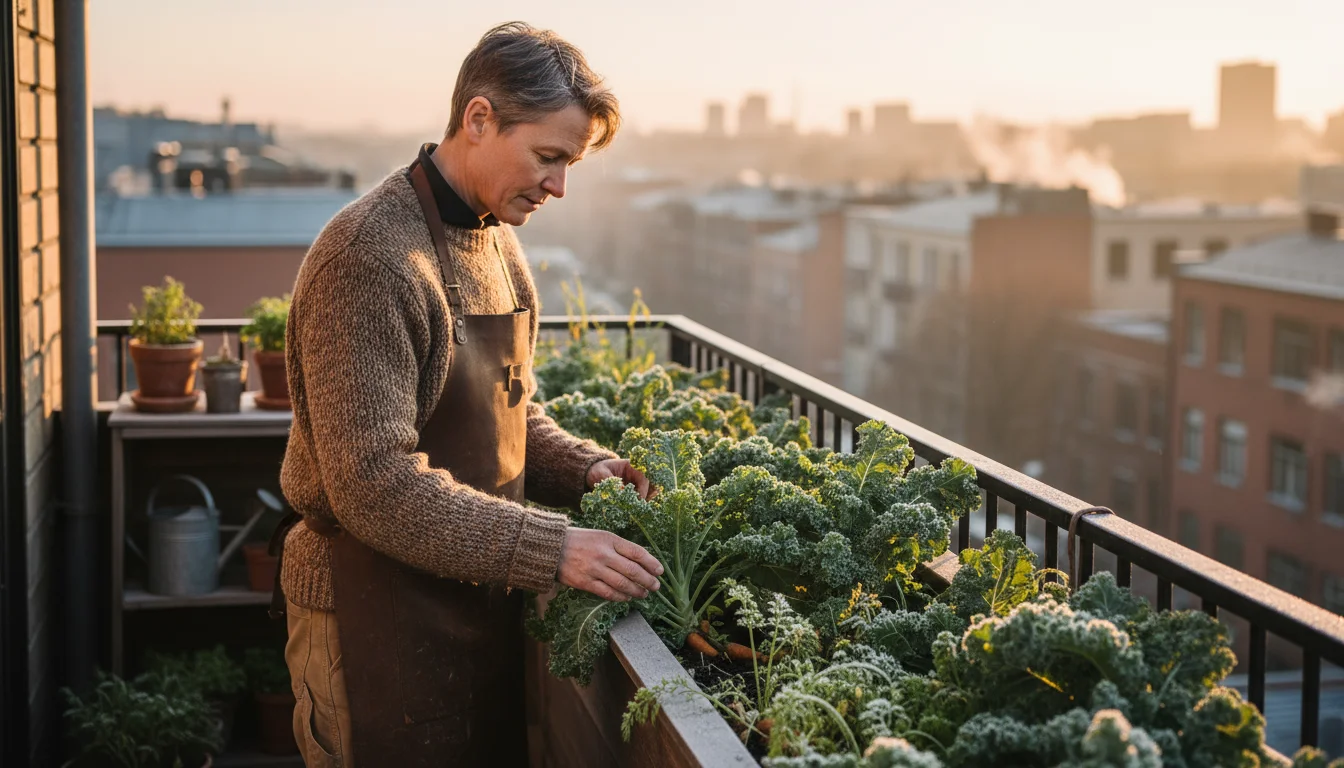
Frequently Asked Questions
What other vegetables get sweeter after a frost?
Beyond kale and carrots, many cool-season root vegetables and leafy greens benefit from cold sweetening. These include parsnips, Brussels sprouts, collard greens, cabbage, and some varieties of spinach and mustard greens. The key is that they are generally hardy and can withstand light freezing temperatures, triggering the conversion of starches to sugars.
Can I leave my potted carrots out all winter?
You can leave potted carrots out all winter in many mild climates, provided the soil does not freeze solid for extended periods. A thick layer of mulch on top of the soil in the container is crucial for insulation. In colder climates where soil might freeze hard, you should either harvest your carrots before a deep freeze or move the entire container to an unheated garage or shed to keep the soil from freezing solid. Ensure the pot has excellent drainage to prevent rot.
Does frost damage all plants?
No, not all plants are damaged by frost. Tender, warm-season plants like tomatoes, peppers, beans, and basil are highly susceptible to frost damage and will likely die with the first significant chill. However, many cool-season vegetables, including those that benefit from cold sweetening, are frost-tolerant. They can withstand light frosts and sometimes even recover from a hard freeze, especially their root systems. Always check a plant’s hardiness before expecting it to survive cold temperatures.
How cold is too cold for kale in a container?
Kale is remarkably cold-hardy. While it thrives in cool temperatures and becomes sweeter with light frosts, sustained temperatures below 20°F (-6°C) can cause significant damage, especially to unprotected leaves in containers. The roots in a container are more exposed than those in the ground, making them more vulnerable. Move your kale pots to a sheltered spot or cover them with heavy frost cloth if temperatures are predicted to drop below 20°F for extended periods.
Will protecting my plants with a cover prevent them from getting sweeter?
Using a cover to protect your plants from a hard freeze will not prevent the cold sweetening process. The plants still experience lower ambient temperatures that trigger the sugar conversion, even if the cover provides a few degrees of insulation from direct ice formation or wind chill. The goal of covering is to prevent physical damage from extreme cold, allowing the plants to continue the sweetening process and be available for later harvest. Remove covers during the day to allow for light and air circulation.
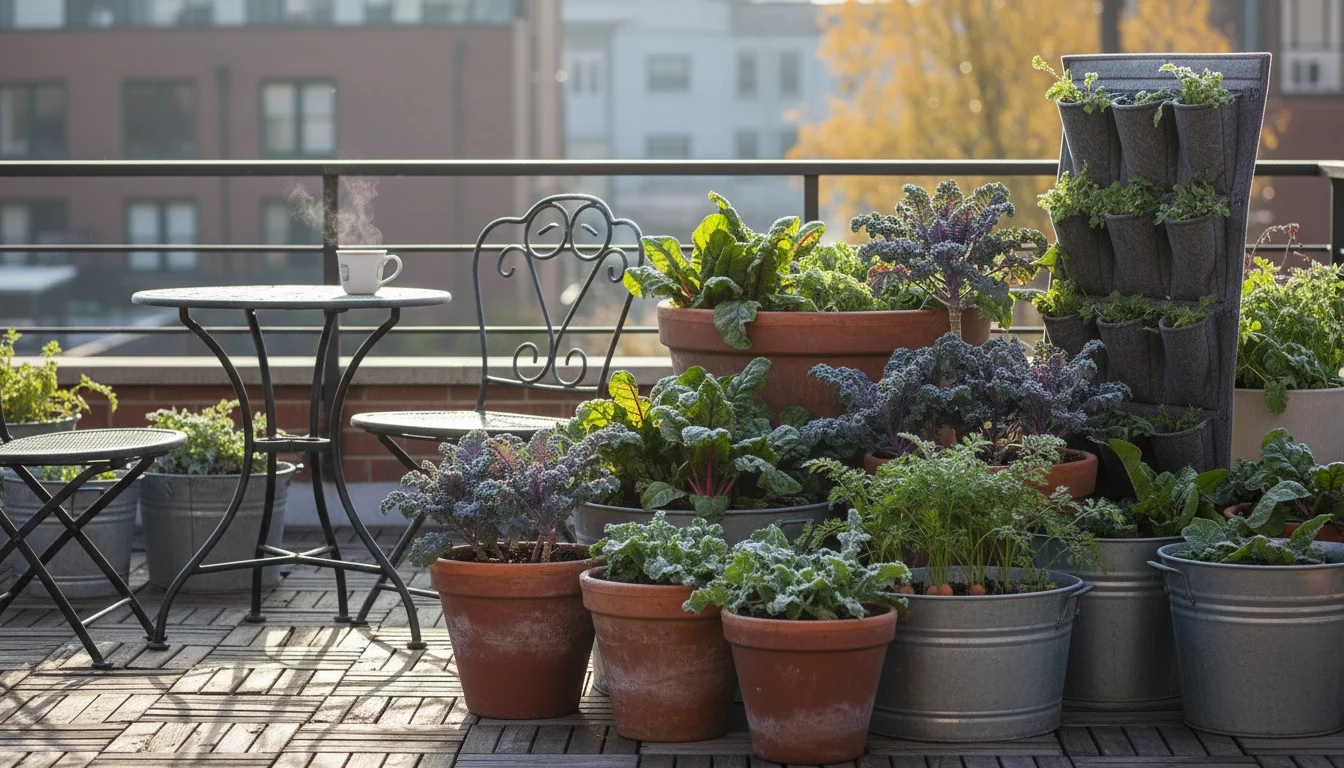
Sustainable Sweetness: Eco-Friendly Fall Gardening
Embracing the ‘first frost’ trick for improving vegetable flavor in fall aligns perfectly with sustainable gardening practices. Maximizing your harvest, extending the season, and making the most of your resources are core tenets of eco-conscious container vegetable gardening. You enhance your produce’s taste while minimizing waste and environmental impact.
Composting Plant Debris
As you clear out spent summer plants or prune frost-damaged leaves from your fall crops, remember to compost them. Healthy plant material, free of disease, makes excellent additions to your compost pile. This process turns organic waste into nutrient-rich soil amendment, reducing your need for purchased fertilizers and returning valuable organic matter to your garden beds or container mixes. Composting contributes to a closed-loop system, where your garden feeds itself, embodying a key fall harvest tip.
Water Conservation in Cooler Months
Cooler fall temperatures mean less evaporation, so your plants require less frequent watering. Practicing mindful watering not only prevents root rot but also conserves a precious resource. You can collect rainwater for irrigation using simple rain barrels, reducing reliance on municipal water supplies. Ensuring good drainage prevents water waste from runoff. This attention to water use is crucial for any environmentally conscious gardener, particularly in small-space gardening where every resource counts.
Protecting Beneficial Insects
As temperatures drop, many beneficial insects seek shelter. Avoiding chemical pesticides is always a sustainable choice, but it is especially important in fall when insects might be less active and more vulnerable. Many beneficial insects, such as ladybugs and lacewings, can help control late-season pests naturally. Providing simple shelters or leaving a small patch of spent plant material can offer refuge for some of these helpful garden allies over winter, contributing to a healthier ecosystem in your container vegetable gardening efforts next spring.
Using Organic Mulches
When you mulch your containers to protect roots from freezing, opt for organic materials like straw, shredded leaves, or wood chips. These materials break down over time, enriching your soil and improving its structure. Unlike synthetic mulches, organic options contribute to soil health and provide habitat for beneficial microorganisms. This simple act of mulching serves multiple purposes: insulating plants, conserving moisture, suppressing weeds, and building soil fertility. It is an easy, effective way to integrate sustainability into your ‘when to harvest carrots after frost’ strategy.
Choosing Local and Open-Pollinated Seeds
When planning for next year’s cold sweetening vegetables, consider choosing local, open-pollinated, or heirloom seeds. Open-pollinated varieties allow you to save seeds from your healthiest, sweetest plants, creating a self-sustaining cycle and preserving genetic diversity. Supporting local seed suppliers also reduces the carbon footprint associated with transportation. This foresight helps you grow more resilient plants adapted to your specific microclimate, enhancing your improving vegetable flavor in fall outcomes for years to come.
By integrating these sustainable practices, you not only enjoy incredibly sweet and flavorful produce but also contribute to a healthier environment, making your small-space garden a beacon of eco-friendly abundance.
For trustworthy gardening information, visit:
ASPCA Animal Poison Control, Michigan State University Extension — Gardening, University of Wisconsin Extension — Horticulture, Iowa State University Extension — Yard & Garden and Washington State University Hortsense. These organizations provide expert, research-based advice for gardeners at all levels.
Disclaimer: This article is for informational purposes only and is not a substitute for professional gardening advice. Always consult local extension services or horticulture experts for region-specific guidance.
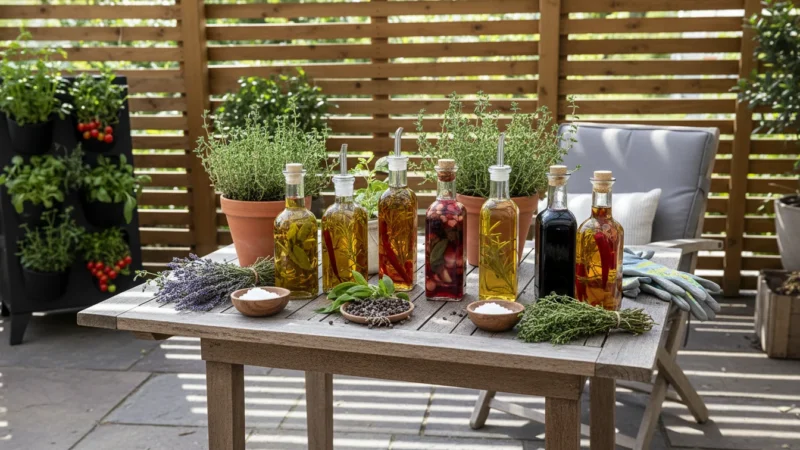
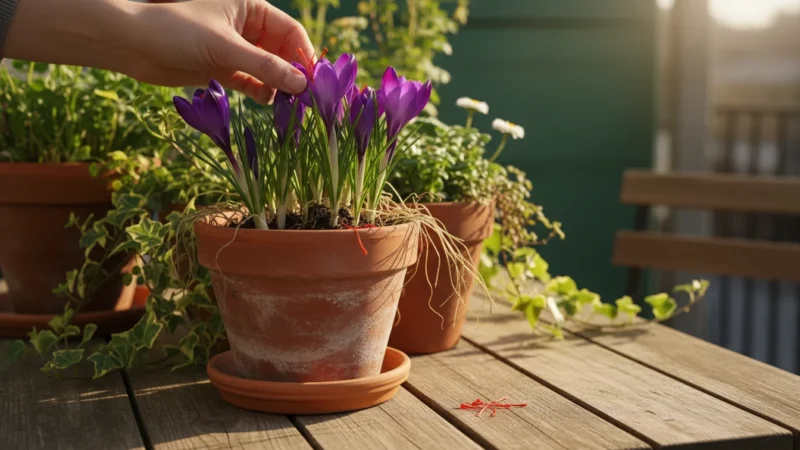

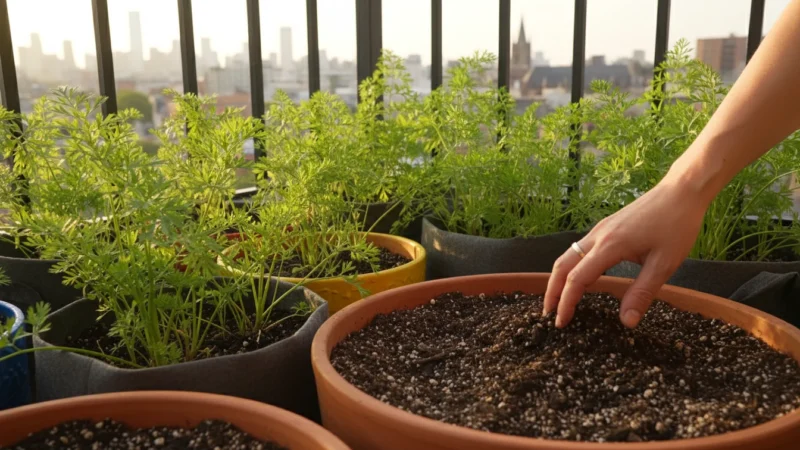
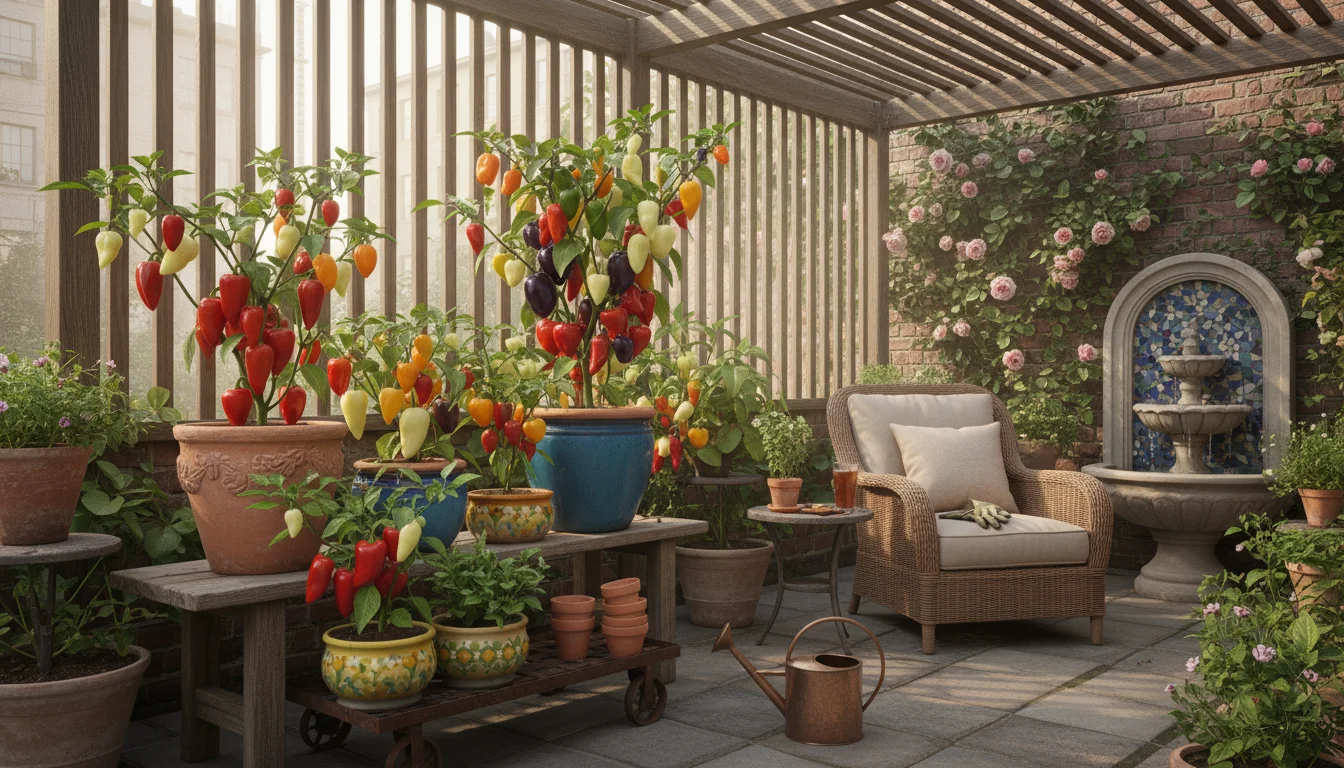

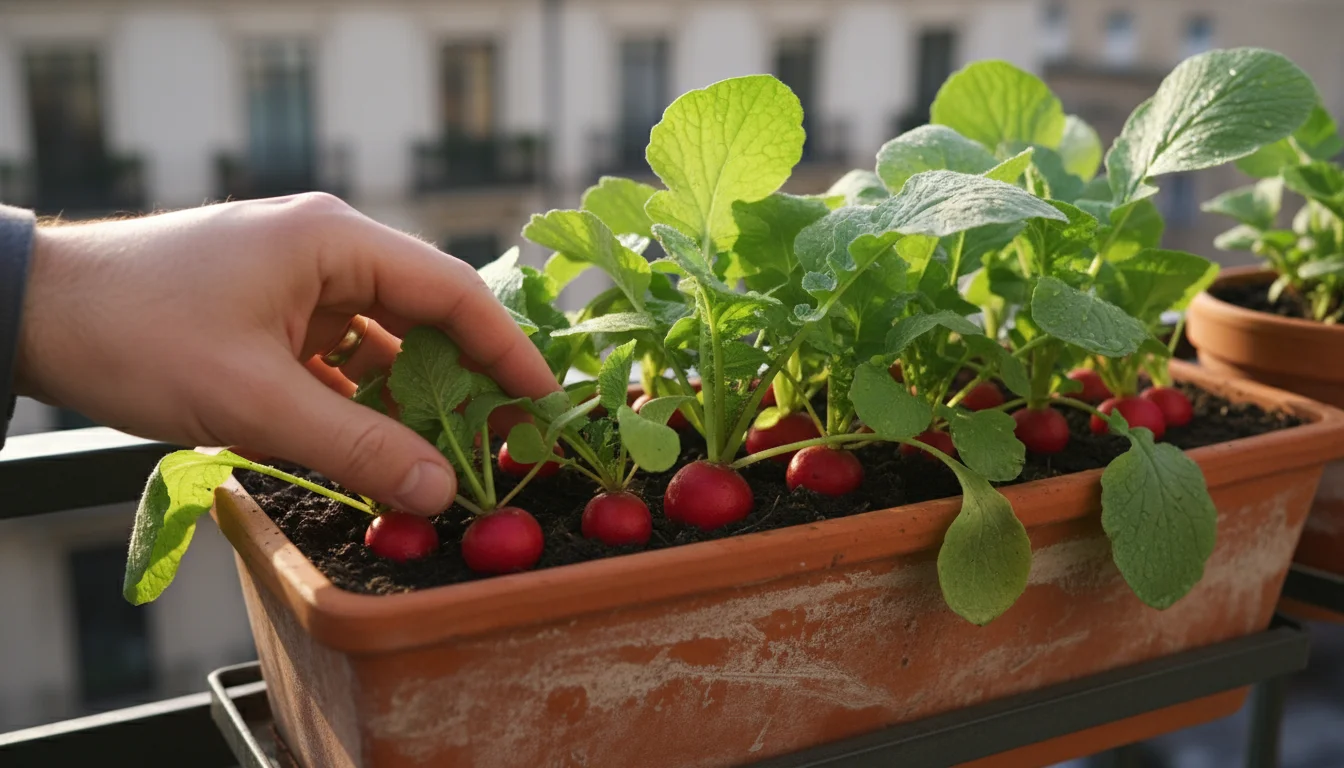
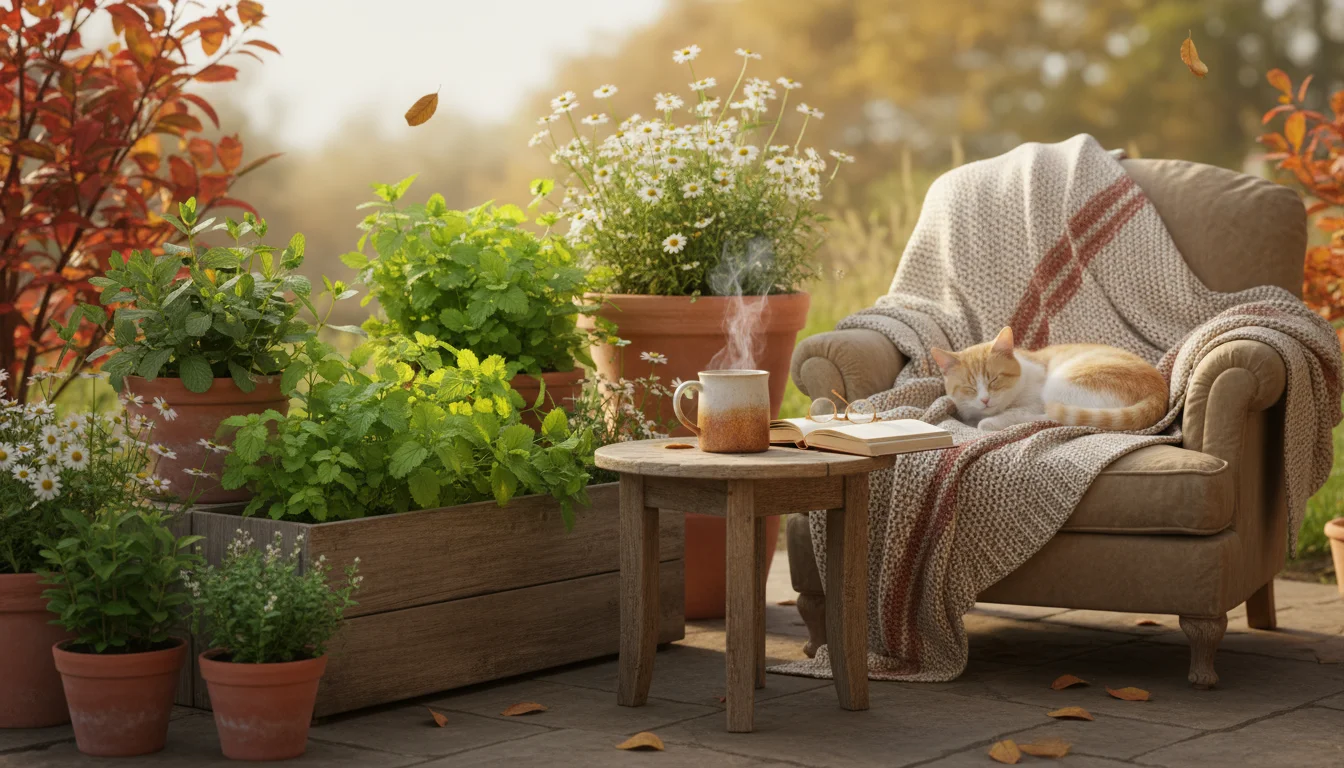
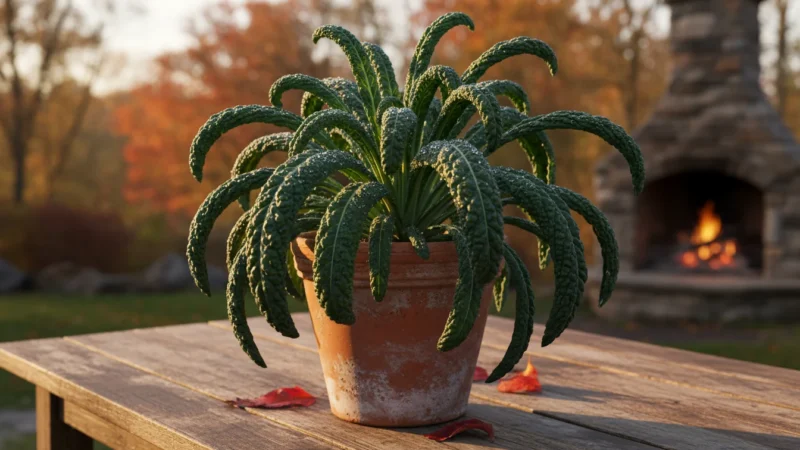
Leave a Reply